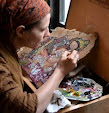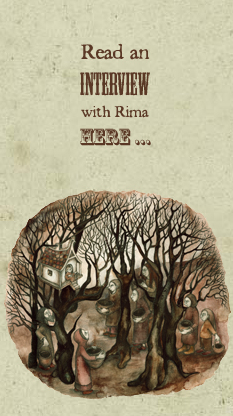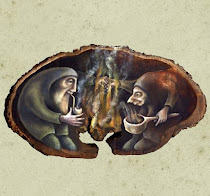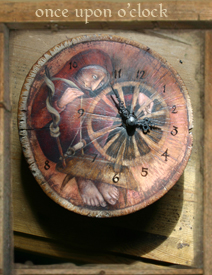I HAVE BEEN out wandering the lanes in the early mornings and the not-yet-evenings as the sun lights up the last of the daffodils' muddied yellow skirt-hems, which bow out now to the shyest of first bluebells and a whole green dancehall of hedge-fellows.
My heart is heard singing along beside these hedgerows of Devon, as I peer in between the hazel-knots and ivy-mats, where grow the most cheerful and interesting of plants: those roadside weeds and stubborn stragglers, always overlooked, yet springing undaunted every year and offering us a quiet libraryful of magics, medicines, folklore and food.
Spring has been beautiful, and as every year, it opens in me a small door of plant-longing; a kind of yearning to learn the true names amongst the walls of unknown green along our lanes. And this year I've taken that longing and begun to follow it. For years I've learnt the wayside plants in a haphazard way, my knowledge full of gaps; but now I take my copy of Roger Philips' Wild Flowers of Britain, a notebook and a thermos, and follow where the hedge leads.
I'll notice a new unfamiliar plant, perhaps flowering, perhaps not, and kneel down by it, identifying it if I can, and draw it roughly in my sketchbook (thereby fixing the plant in my head). I'll take a small sample of the plant to press between my sketchbook pages after photographing it. And at home I am turning a quarter leather bound book with blank pages (which I made whilst studying bookbinding at college and have hardly opened since) into my own ramshackle herbal.
There's no order, except perhaps the year's passing. I'll make a page for each plant and write all the things I can learn about it - where it grows and when, what ails it heals, and so on. This I'll add to over time, and bit by bit, I hope the carpet of unknown green will become like a crowd of friends, all shouting their names at me as I greet them along the way.
I come by this herbarium-habit well: I have a book of pressed flowers collected by my Grandmother Lois as a little girl, almost a hundred years ago and long before the seeds of my own plants' great great great great grandmothers were blown across the fields.
Tom and I were inspired at the end of last year by a foraging walk we took with Robin Harford of Eat Weeds. In late autumn and just a short mile or so he showed us many plants which could be eaten or used in cooking, and he told us their stories with such joy and passion! We learnt about the indigenous plants whose seeds would have been used to spice foods before exotic spices were shipped in from far shores, like Hogweed (Heracleum sphondylium).
The tiny seeds taken from a dried seed head can be ground and sifted to obtain a powdered spice. This can be used in recipes to add a flavour unlike anything you've ever tasted, though it could be likened very loosely to cardamom. Be very careful with identifying Hogweed - Giant Hogweed (Heracleum mantegazzianum) is poisonous, as are many plants of the same umbellifer family, like Hemlock (Conium maculatum). Here below we are shown Hemlock and Hogweed leaves side by side - the Hemlock has more deeply etched lines and a purple blotchy stem.
.JPG) |
| Hemlock leaf, left (Conium maculatum) against Hogweed leaf, right (Heracleum sphondylium) |
 |
| Robin finds Ivy-Leaved Toadflax (Cymbalaria muralis) |
.JPG) |
| Herb Bennet / Wood Avens root (Geum urbanum) |
.JPG) |
| Mugwort (Artemisia vulgaris) |
.JPG) |
| Plantain (Plantago major) |
 |
I made Spiced Hogweed Seed Biscuits when we got home, and they were loved by all who ate them. Robin Harford has made a great little illustrated Wild Food Recipe Book (the first of a series) containing many of the plants he teaches on his foraging walks, which he shall continue as he makes his way round the UK this year. If you're interested in hosting him and holding a foraging walk in your corner of Britain, give him a shout.

And on I walk, slowly tracing these lanes, edged on both sides in the Devon way with high hedges which have been there for centuries, and which stitch our hillsides with patchworks of fields.
The blackthorn is blossoming, though the hedgerow still hangs with the dying embers of last year's leaves.


The catkins are blooming, and the spiders mock the holly with their spinning...


Some mornings, Macha and I walk the lanes as cloud-lanes are drawn across the sky, and the dew steams in the new day's sun.



like cows,
or views,
or dead badgers...
Sometimes the hedgebanks are inhabited...


And on we go, marvelling at the beauties by the roadside: Bittercress and Dandelion, Violet and Celandine, Stitchwort and Primrose and Jack-by-the-Hedge. A merry list of lasses and lads, all invited to the Spring Ball, waiting shyly by the lane for their sweethearts...



I find that my walking is teaching me; each time I go out one more stranger has become friend. I look at the wayside plants through vehicle windows with longing as I zoom by. I've had my nose in a most excellent book of Hedgerow Medicine, which has taught me all sorts of things I didn't know, like that Goji berries grow in England's hedgerows! This year things are flowering early, and in the last few days the plants have been tumbling over each other to bloom. Yesterday I picked a bunch of Ground Ivy, White Bluebells and Yellow Archangel for a friend's birthday. Even the mud in the middle of the road sprouts tiny plants, determined, unnoticed and driven-over. As time goes on, my book will fill with green learnings, as I make my apprenticeship with the hedge.
These hedgerows are my home, and in time they'll be my food and my medicine too. A little while ago, I was interviewed for the wonderful Plant Healer Magazine. It was a long and in depth interview with lots of photos and a focus on wilderness. Do order a subscription, it's lavishly presented and packed with herbal wisdoms and wonders.
We return home to a garden path spattered with primroses. I take such glee in this season's earnest springing. How very beautiful every delicate unfurling of a new and never-before-seen leaf from its bud-cocoon. Dew bejewels the trembling-delicate wing fur of each green hedge-bird learning to fly, and I am glad.
"The Earth laughs in flowers"
~Ralph Waldo Emerson


























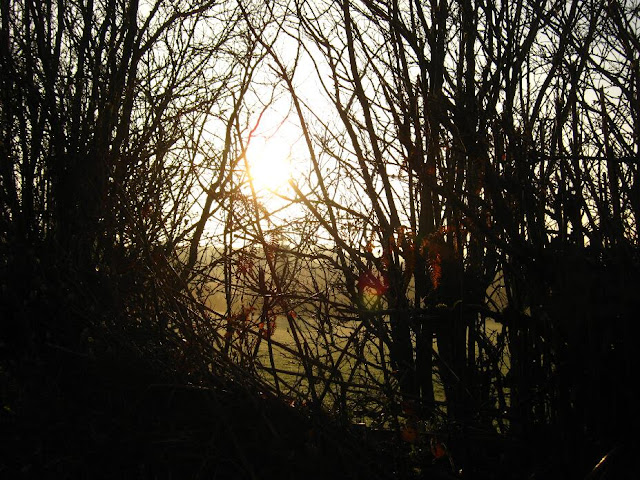








.JPG)

























